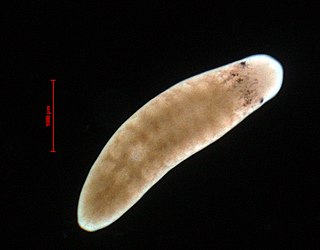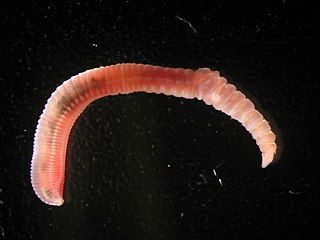 W
WAndroctonus maroccanus is a species of scorpion of the family Buthidae. Along with other members of the genus Androctonus it is also known by the collective vernacular name fat-tailed scorpion. A. maroccanus is endemic to the Atlantic coast of central Morocco.
 W
WCamerata robusta is a species of triclad flatworm found in the shores of Italy. It is the only known species in the genus Camerata. Camerata refers to the chambers present in this genus' penis. The species name robusta refers to the strong muscles present in the copulatory apparatus.
 W
WCapitella teleta is a small, cosmopolitan, segmented annelid worm. It is a well-studied invertebrate, which has been cultured for use in laboratories for over 30 years. C. teleta is the first marine polychaete to have its genome sequenced.
 W
WCarybdea branchi, the South African box jellyfish, is a venomous species of cnidarian, in the small family Carybdeidae within the class Cubozoa.
 W
WChironex yamaguchii, commonly known as habu-kurage in Japanese and as "hub jellyfish" due to erroneous machine translations, is a species of box jellyfish found in coastal waters around Japan, on Okinawa and the Ryukyu Islands, and in the Philippines. It is highly venomous.
 W
WChondrocladia turbiformis is a recently discovered species of carnivorous sponge.
 W
WGersemia juliepackardae is a species of soft coral in the family Nephtheidae. It is found in the northeast Pacific Ocean, on seamounts or on the deep ocean bed. The coral is named in honour of Julie Packard, the executive director of the Monterey Bay Aquarium, for "her dedication to ocean stewardship and conservation, and for elevating public awareness about the ocean environment."
 W
WLeptodora is a genus containing two species of large, nearly transparent predatory water fleas. They grow up to 21 mm (0.83 in) long, with two large antennae used for swimming and a single compound eye. The legs are used to catch copepods that it comes into contact with by chance. Leptodora kindtii is found in temperate lakes across the Northern Hemisphere and is probably the only cladoceran ever described in a newspaper; L. richardi is only known from eastern Russia. For most of the year, Leptodora reproduces parthenogenetically, with males only appearing late in the season, to produce winter eggs which hatch the following spring. Leptodora is the only genus in its family, the Leptodoridae, and suborder, Haplopoda.